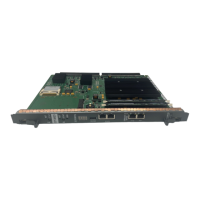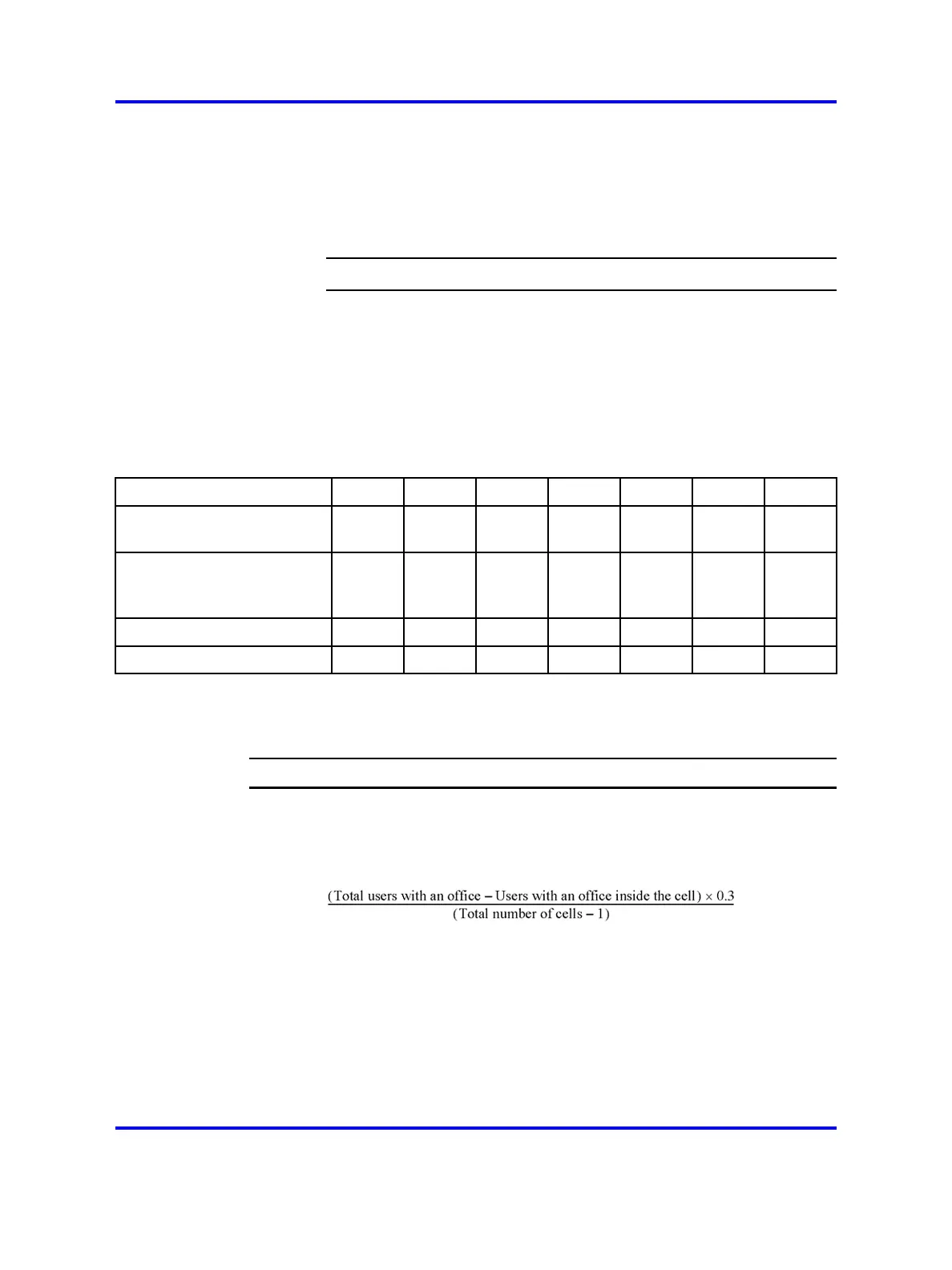Reengineer cells for high traffic areas 87
Use the formula: (users with an office in the cell × 0.7)
2 Enter the result in the row, users inside the cell with an office.
In the example shown in Figure 49 "Example of dividing the
coverage area and recording offices" (page 85), twelve users in
cell 1C1 spend 70% of their time in their offices (12 × 0.7 = 8.4) .
--End--
Note:
Traffic engineering has determined that handset users with an
office spend seventy percent of their time within their home cell.
Calculating the number of users with an office outside the cell
who walk into the cell
Table 11
Example of the table second row calculation
Estimate for:
1C1 1C2 1C3 1C4 1C5 1C6 1C7
Users inside the cell with an
office
8.4
Users with an office outside
of a cell who walk into the
cell
3.2
Users without an office
Users in a cell
Procedure 21
Calculating the number of users with an office outside the cell who walk into
the cell
Step Action
1 Calculate the estimate for users in the first cell with an office
outside of the cell who walk into the cell.
2 Use the formula:
3 Enter the result in the row, users with an office outside the cell
who walk into the cell.
For the example shown in Figure 49 "Example of dividing the
coverage area and recording offices" (page 85), there are a
total of 75 telephone users in Able-Studio, minus the 12 users
already in cell 1C1. Therefore, 63 users can walk into cell 1C1.
However, the 63 walk in users only spend 30% of their time
outside their offices. There are seven cells on the floor plan
Nortel Communication Server 1000
SIP DECT Fundamentals
NN43120-123 01.07
6 January 2009
Copyright © 2008-2009 Nortel Networks
.

